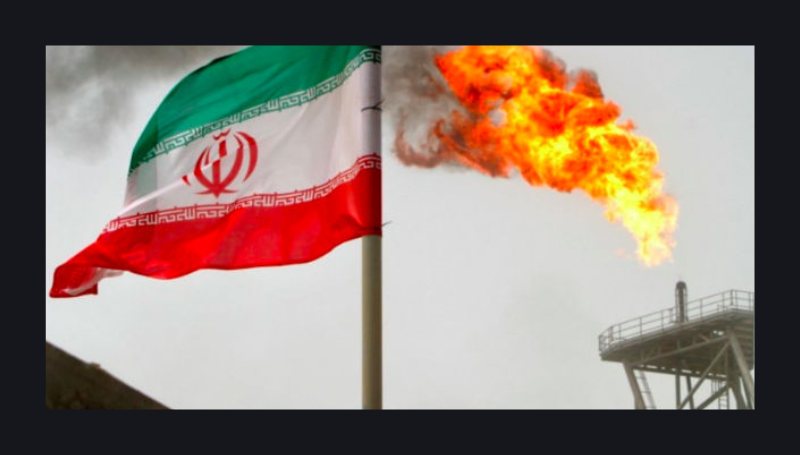Reuel Marc Gerecht and Ray Takeyh
Politico, Apr. 19, 2025
“… the Islamic Republic has entered talks with the Trump administration not because of external pressure but in order to preserve the essential features of its expanding nuclear infrastructure — and they feel confident they can achieve this if the talks proceed.”
Across the political spectrum in Tehran — from surly Revolutionary Guards to the regime’s more moderate diplomats and technocrats — the first round of nuclear talks in Oman between the United States and the Islamic Republic has been greeted with a measure of optimism. Iran’s savvy and smug foreign minister, Abbas Araqchi, professed himself satisfied. The supreme leader, Ali Khamenei, has blessed a second meeting with President Donald Trump’s envoy, Steve Witkoff, scheduled in Rome this weekend.
In other words, far from being a supplicant, the Islamic Republic is exuding confidence.
For too long, U.S. officials have fooled themselves about the nuclear-deterrent capacity of economic sanctions. Now that the Trump administration has decided to reopen negotiations, it’s important that they understand their adversary better, particularly the limits of sanctions to affect Iran’s behavior.
To be sure, sanctions (along with chronic mismanagement and systemic corruption) have depleted Iran’s treasury and spurred inflation and unemployment. The regime can barely keep the lights on and periodically has to shutter government offices and schools in order to conserve energy. But for regime leaders who claim to know the mind of God, those economic troubles are a small price to pay for making Iranians better Muslims. The Islamic Republic’s affection for proxy wars, terrorism and antisemitic conspiracies display a mindset fundamentally different from our own. Sanctions may cause such believers pain. They deprive them of resources. But they haven’t in the slightest obliged them to forsake their faith and their missions.
Most consequentially, sanctions have never made the clerical regime abandon its nuclear ambitions. During Trump’s first term, his “maximum pressure” sanctions campaign did real damage to Iran’s economy. Iran didn’t, however, concede its atomic assets. So far as we can tell, there wasn’t even a conversation about doing so among the men (and they are, of course, all men) who matter.
Nor was Barack Obama’s 2015 nuclear deal, the Joint Comprehensive Plan of Action, the product of accumulating sanctions, or at least not solely the product of sanctions. The nuclear talks that lead to the agreement actually started with the Europeans in 2003 when George W. Bush and the looming Iraq War terrified Tehran (and the Europeans). Obama’s more friendly outreach only made progress after Washington made a key concession — Iran’s “right” to enrich uranium. The Americans also made a second key concession: allowing Iran to retain a substantial nuclear infrastructure, which could ramp back up at any time. Ali Salehi, the MIT-educated nuclear engineer who was probably the mastermind behind Iran’s dual-use import network, loved the Obama agreement because it would guarantee the Islamic Republic a more advanced, better-financed atomic program that it could grow in the open. It was Obama’s permissive terms much more than the promised financial relief that induced the theocracy to sign the 2015 accord.
From the Iran-Iraq War in the 1980s forward to now, the Islamic Republic has proven far more resilient than its critics expected, in large part because it has a pattern of using short-term retreats to pursue long-term, consistent goals. The regime gives ground when necessary but always circles back to take back its concessions.
You can see this pattern domestically. Since 2009, the clerical regime has overcome numerous nationwide protests, some of which had economic sparks and all of which could have proved fatal to the theocracy. Each time, neither Khamenei nor his security services have flinched from doing what’s necessary to suppress internal dissent, but they have also made short-term concessions to retain control. For instance, the mullahs have repeatedly eased restrictions against what they consider a lethal threat — public visibility of women’s hair — allowing scarves to come down temporarily when unrest threatens the state. Later the regime reasserts its sartorial dictates, arresting and beating refractory women. Abroad the regime acts similarly. When the United States invaded Afghanistan and Iraq, Tehran held back, temporarily played nice, and then devised tactics to kill and torment Americans. Obama’s nuclear accord fits the pattern: Make minor concessions while establishing the means to come back stronger.
The Islamic Republic has recently had an awful run, and the Trump administration might assume that Tehran is on its back foot as the talks get underway. The collapse of the core elements of Tehran’s “axis of resistance” has certainly shrunk its imperial reach. Gone is its close ally and neighbor, Syrian dictator Bashar al-Assad, along with the Syrian land bridge to Lebanon and the proxy armies that allowed the clerical regime to project power in the Arab East. On two occasions last year, Jerusalem demonstrated its capacity to easily breach Iran’s air defenses. The mullahs’ retaliatory, conventionally armed missiles, in which the regime has massively invested, proved woefully inadequate: Most were intercepted, those that got through caused minimal damage and one Palestinian girl died. ...SOURCE


